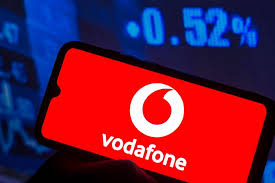Vodafone Share Price: What Every Investor Must Know Now
Are you keeping an eye on the “Vodafone share price”? If not, you might be missing one of the most intriguing opportunities (and risks) in telecom investing today. This in-depth article will walk you through the current standing, the background story, the key metrics, what could happen next — and most importantly: how you could act intelligently (or decide not to) on it.

1. Why the Vodafone share price matters
When we talk about the “Vodafone share price”, we mean the price per share of Vodafone Group Plc (ticker VOD on the London Stock Exchange) — a major global telecom player. According to Reuters, Vodafone’s 52-week range is between around £62.40 and £96.34 (for VOD.L). (Reuters)
Why does this matter? Because:
- It gives insight into market expectations of Vodafone’s future profitability and growth.
- For dividend-seekers, the share price together with yield matters. Reuters notes a dividend yield of around ~4.16%. (Reuters)
- For shareholders/traders, large movements in the share price reflect changes in business environment, debt burden, regulatory risk, competitive landscape.
Bottom line: paying attention to Vodafone’s share price is not just about “what it is now” — but why it is, and where it might go.
2. Current snapshot: Where the Vodafone share price stands
Here are the key recent figures and context for Vodafone:
- On 12 Nov 2025, the share price of Vodafone was trading at around £95.61 (for VOD.L) per Reuters. (Reuters)
- The 52-week low is ~£62.40; the high ~£96.34. (Reuters)
- Vodafone’s investor site lists its “Share and Dividend” section where you can chart its share price and past dividends. (investors.vodafone.com)
- In India, its sister company Vodafone Idea Ltd is also traded — share price around ₹10.37 in pre-opening on 12 Nov 2025. (Moneycontrol)
These numbers tell us that Vodafone is currently trading towards the upper end of its 52-week range. That raises interesting questions: is it over-valued, or simply reflecting strong direct activity?
3. What’s driving the Vodafone share price up (and what could hold it back)
Drivers of upside:
- Restructuring and asset sales: Vodafone has been selling assets in less-profitable markets and refocusing on core markets and growth areas. (Wikipedia)
- Dividend and return to shareholders: With yields in the mid-4% area and possibly higher returns due to restructuring, many income-oriented investors are drawn. (Reuters)
- Market sentiment: With telecom and connectivity demand still growing (5G, IoT, fixed line broadband) Vodafone remains in a sector many view as defensive yet growth-oriented.
Risks / headwinds:
- Debt & profitability: Vodafone has a large debt burden and negative returns on equity (ROE) noted by Reuters. (Reuters)
- Competitive pressures: In Europe and Africa, competition is fierce; margins are under pressure.
- Regulatory / macro risk: Telecoms are subject to regulation, licensing, spectrum auctions, etc. Any negative surprise can impact share price quickly.
- High valuation: When a stock is near its high for the year, the risk of pullback or correction increases if growth disappoints.
4. What to watch: Key metrics & milestones
If you’re deciding whether Vodafone’s share price is a buy, hold or sell, here are critical things to monitor:
- Debt / equity ratio: High leverage could limit upside.
- Free cash flow and dividend sustainability: Are dividends backed by cash or by borrowing?
- Earnings growth (or turnaround): Because telecoms often plateau, growth or cost‐savings matter.
- Market sentiment & guidance: Does Vodafone give bullish guidance? Are analysts upgrading or downgrading?
- Macro/regulation signals: Changes in spectrum costs, government regulation, competitive licensing can materially shift the landscape.
5. What might happen next with the Vodafone share price
Based on current data and context, here are two plausible scenarios:
Bull case: If Vodafone executes its restructuring well, reduces debt, sustains or grows dividend, and leverages growth in IoT/5G/data services, the share price could break above its 52-week high and perhaps target new territory beyond £100. Investor sentiment would be strong, and the valuation would justify it.
Bear case: If margins fall, debt eats cash flow, or regulatory/competitive shocks hit, the share price could fall back — maybe toward the lower end of its range (~£60-70). The high current valuation would make downside risk larger than the upside in this scenario.

6. Should you invest (or hold) Vodafone right now?
Here’s a simplified decision matrix:
- If you are income-seeking, comfortable with moderate risk, believe in telecom stability: Vodafone may be worth a look — especially if the dividend is attractive and you believe in the turnaround story.
- If you are growth-oriented and expect big returns, Vodafone may not deliver high growth; the upside might be more limited (compared with higher‐growth tech firms).
- If you are risk-averse, worried about debt or competition, you might want to wait for a pullback or clearer signs of turnaround.
7. Key take-aways at a glance
- “Vodafone share price” currently sits near its annual high (~£95) with ~4% dividend yield.
- The company is in a transition phase: selling non-core assets, refocusing on core markets.
- Upside exists (turnaround, dividend support) but risk is significant (debt, competition, regulatory).
- Monitor debt levels, cash flow, market guidance.
- If you already hold the stock: stay updated with quarterly results and news.
- If you’re considering buying: you may want to wait for a dip (better entry) unless you’re confident in strong upside.